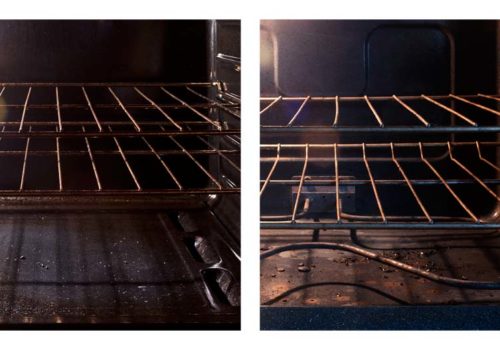I always question why photographers pair their pictures. Is it to obliviate the weakness of a single image or is it truly because it reinforces the message and brings a deeper meaning to the ensemble? Sometimes the pairing is the necessary format (see Day&Night series by Forrest McMullin reviewed in Le Journal). And sometimes I wish it had not happened. In the case of Mark Schoon and Dominic Lippillo and their Anti-Local series, the pairing seems legitimate (two photographers, 1,000 miles away, turning their camera to document their own domesticity) but their deliberate choice to depict unflattering subjects got me puzzled. What is there to see? Stained bathtub, water drops in a shower, piles of folders. How does it make a compelling project?
Schoon and Lippillo became friends during their graduate studies at Ohio University. Each took their own path after school: Lippillo moved to a farm in Ohio, while Schoon headed to New York City’s urban life. They looked for a common visual project to stay connected and, after several ideas that did not materialized, they decided to focus their attention on their own private space, producing tightly cropped images of apparently mundane subjects. One would send an image taken inside his home to the other one who would have to come up with another image that was complementary. “It was always a surprise, we never discussed what we were trying to say or why we found it interesting,” comments Mark Schoon.
They figured out that pairing images would allow for more investigation and would ask people for more consideration. It is precisely the mental process that the viewer is invited to take that makes the project work. As a viewer, it makes you investigate and ponder, in search of meaning, what if the ordinary was not so ordinary. Eventually the meaning is to be found, not in the images themselves but somewhere in between, in the space that was created, not in the obvious but in the oblique view we are invited to take.
For the photographers, their experiment resulted in a stronger relationship. “Photography was the vehicle to show what was going on in our life,” Mark Schoon remarks. On a higher level, the two artists state that they wanted to “create a dialogue about national identity versus regionalism, proximity versus locality, and space versus place”. They acknowledge that many images did not make the mark but overall, the pair came up with 25 images that encapsulated their vision and printed them on four by four inches on C-prints.
The diptych project is still a work in progress, according to its authors, as both of them moved to new locations and new houses. Mark Schoon recently moved to Atlanta and teaches at the University of West Georgia while Dominic Lippillo now resides in Mississippi and teaches at Mississippi State University.
















